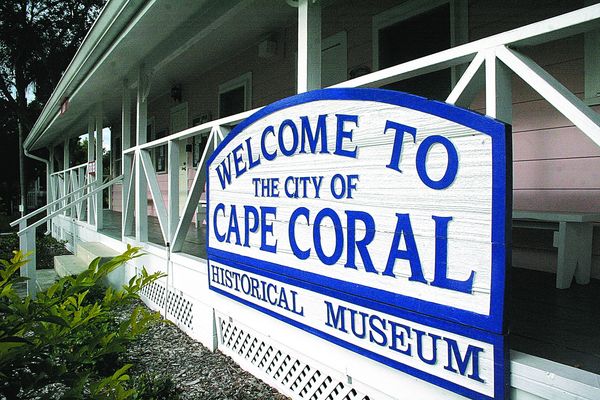Carroll looks back at early years with Cape Police Department

As the city celebrates 50 years of incorporation in 2020 and the Cape Coral Museum of History honors the police department with a special exhibit through Oct. 31, Carroll was one of the pioneers. He wanted to be in on the ground floor of something special and he found his calling on Aug. 9, 1971, when the police department opened for business.
Prior to that day, Carroll was happy in his job as a police officer in Oaklawn, Ill. He had experienced just about everything life had to offer in a community that was close to Chicago’s south side, which was known for its violent crime.
Carroll had vacationed in Cape Coral a couple of times and noticed the new municipality had just hired a police chief – Jim White – and was creating a police department.
“That caught my attention, so I went to city hall, talked to city manager Cliff Ryan about what was going to happen next,” Carroll remembered. Ryan put Carroll in contact with White. The two had a pair of lunches about Carroll joining the first police force. “I told him the idea of coming here and to be in on the initial building of a non-existent police department really intrigues me,” Carroll recalled.

About three months went by and Carroll thought the opportunity was past him. Finally, a letter came, and White offered him the position of second command and the rank of lieutenant. So, he left a $13,000 job and a pension for a $8,500 salary and no pension. The police department was set up in the former Gulf American Cooperation model home center at Southeast 44th Street and Del Prado Boulevard. Carroll’s desk was in a public area close to the radio operator’s desk. White and Carroll had a staff of two sergeants, seven patrolmen and the chief’s secretary. The two patrol cars were leased. They had civil defense radios mounted on plywood in the backseat with the antenna extending from the back window. The city logo was on the sides of the vehicles, but the word “police” did not appear.
Carroll said the first day of the Cape Coral Police Department rolled out like any other with little fanfare. “My anticipation was not a nervous thing,” he said. “It was ‘let’s get this done.’ We would handle whatever came before us. We had no idea what would come before us.”
Carroll could not recall the very first call for assistance into the police department, but news reports indicated it had something to do with a “burning at Pinecrest off Avalon” at 9:58 a.m. on Aug. 9, 1971.
Although the crime rate was extremely low in Cape Coral then, there were thefts, but tracking stolen items was difficult as comprehensive computer data bases were non-existent. Carroll came up with an idea to track stolen items. He created a program where residents could use an engraver to put identifiable marks on personal items like TVs and stereos. If those items were stolen, they could be traced back to the owner using the engravings. “We were given credit for being the first in the state of Florida to use that,” Carroll said.
Carroll spent 19 1/2 years with the Cape Coral Police Department, rising to the rank of major. He retired on March 23, 1990. He was in on the initial hires of officers Rob Petrovich, Jay Murphy and Bart Connelly — all who would later become chiefs of police for the city. He was the liaison between the department and construction company for the building of the new headquarters on Nicholas Parkway in the early 1970s.
Little did he know a young 26-year-old who was always fascinated with police work and learned much about life near the streets of Chicago, would find a home and new dreams in the fledgling community Cape Coral. Only 16,000 people lived in the city when he first arrived for work in 1971, but climbed to 75,000 when he retired in 1990.
“I was most proud of being a police officer,” Carroll said. “I was proud of building the department. How many people can say they expanded and built a brand new police department. It was a once in a lifetime shot.”
Now a 49-year city resident, Carroll, 82, spends time with family. Two sons and a daughter live in the city. The two sons are retired from the Cape Coral Fire Department, while the daughter is retired from General Motors. Carroll also has a grandson who is a Cape Coral firefighter and his son-in-law is a lieutenant with the department.
“Little did I know at the tender age of 26, my education about people and life would expand expeditiously,” Carroll said. “I met every kind of person in the world out there and in the street. You just tried to take care of problems you could take care of. I enjoyed the challenge of just trying to make things right.”
Submitted by Tom Hayden, a Cape Coral Museum of History board member. As we celebrate 50 years as a city, much of our area’s history, chronicled at the museum, will be featured twice a month in similar articles provided to the Cape Coral Breeze.




